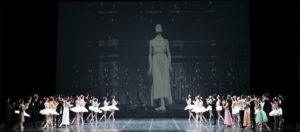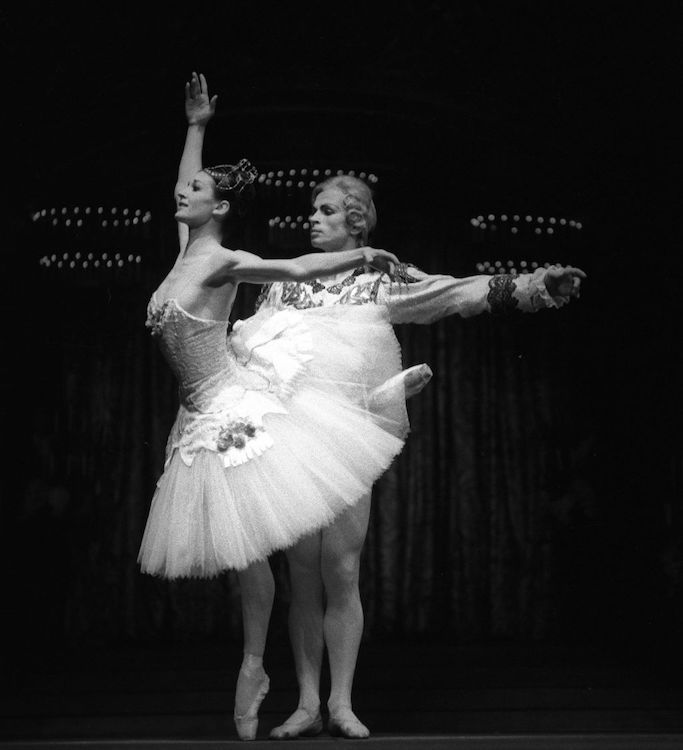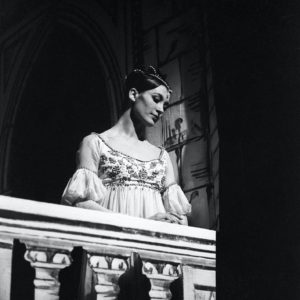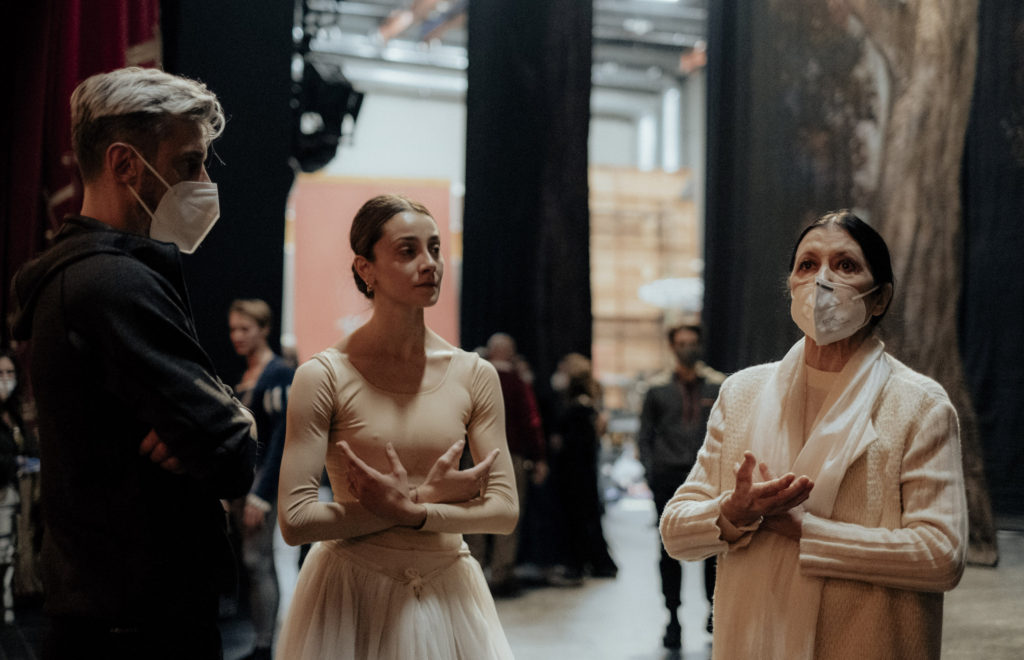Beloved Carla Fracci: An iconic Italian ballerina remembered - Vancouver Ballet Society
- Home
- Features 2020 - 2023
- Beloved Carla Fracci: An iconic Italian ballerina remembered

By Silvia Poletti
On April 9, at the end of the first edition of Gala Fracci — Teatro alla Scala’s celebration of the late Carla Fracci, intended to become an annual affair — the theatre’s red curtains closed on the dancers applauding the ballerina’s image projected onto the backdrop. With that moving conclusion to the three-hour evening of dance in Fracci’s honour, the distance at which the Milan theatre had kept the Italian artist during her later years was definitively filled.

The reconciliation had begun some months before Fracci’s sudden death in May 2021 at age 84. In January 2021, the recently appointed director of La Scala’s ballet company, Manuel Legris, had invited her to give two master classes prior to upcoming performances of Giselle. (Both are online; one, with Martina Arduino and Claudio Coviello, focuses on the first act; the other, with Nicoletta Manni and Timofei Andrijashenko, on the second act.) “It seemed to me absolutely obvious to invite her,” Legris declared in a television interview. “She is one of the greatest Giselles of all time and she is ‘La Scala.’” The chance to learn precious stylistic details and acting points that were key to her iconic reading of the ballet was relished by the young dancers.
For Fracci, this return home to the theatre where she had once been an étoile meant a lot. To receive respect from the dancers and the theatre itself was an unexpected gift that made her “as happy as a baby,” her husband Beppe Menegatti recently shared.

What had caused the rift between her and La Scala? In the early 2000s, Fracci was going to take on the role of director of La Scala Ballet when the unions stopped the appointment because of her intention to hire her husband, a well-known theatre director, as an artistic consultant. After much public discussion in the media, the ballerina and the company went their own ways, and she was later named director of Rome Opera Ballet, where, with Menegatti as her assistant, she stayed for ten years.
At the news of her death, all was forgotten by Milan’s citizens, who stood in endless silent queues to take a flower to her coffin in the hall of the theatre, where it was placed at the request of the president of La Scala’s board, Milan’s mayor Giuseppe Sala. There were also spontaneous gestures of love by city workers, when a delegation of tram drivers arrived to express their sorrow at the death of Fracci, who was the daughter of one of their own. While a pupil at La Scala’s ballet school, Fracci had been nicknamed “la tramvierina” (the little tram driver) after her father Luigi, who would ring the bell of his tram each time he passed near the theatre in salute to his beloved daughter.

In the early 1950s, when Italy was recovering from World War Two and society was quickly changing thanks to the industrial boom, this talented child of a working-class family, who was headed for stardom, embodied for many the possible dream. And Fracci never forgot her roots, always valuing a strong work ethic and a grounded vision of life. Onstage she could be the most exquisite Romantic creature, but she spoke of her work simply. “We must roll up our sleeves,” she would say, a phrase that indicates the tenacity, discipline, and humility with which she served her art. “But do not define it as a sacrifice!” she often added. “We, as artists, are privileged. Sacrifices are what hard workers like miners do for a living.”
She was also admired by artists and intellectuals. The first was the celebrated director Luchino Visconti. During the staging of Bellini’s opera La Sonnambula with Maria Callas, he had noticed Fracci, who was making her debut in La Scala’s school performance. This means she would dance a “farewell pas” after the opera, and he had invited his staff to stay and watch “la Fraccina” in Le Spectre de la Rose. Later, Visconti chose her for the principal role in a ballet he had conceived for La Scala, Mario e il Mago (Mario and the Magician), which turned the media lights on the young dancer.
Surely the closeness of the creative circles her husband introduced her to — Menegatti knew poets, actors, and theatre directors — helped broaden her artistic perspectives. She had opportunities to experiment as an interpreter, playing Ariel in Shakespeare’s The Tempest in 1963, and later acting in movies and a television series about the composer Verdi. She also explored dramatic interpretation through dance roles created for her, like the simple Gelsomina in Mario Pistoni’s ballet La Strada (The Road), after Federico Fellini’s movie of the same name, or the title character, an ancient prostitute, in a dance drama based on Eduardo De Filippo’s celebrated comedy Filumena Marturano.

In addition to the many roles in which she was partnered by Eric Bruhn, during her years at American Ballet Theatre she was a favourite interpreter of Antony Tudor, John Butler, and Agnes de Mille. John Cranko created the first version of his Romeo and Juliet for her, and Anton Dolin used to say that in Giselle she reminded him of Olga Spessivtseva. She performed the Romantic ballets as a guest all around the world from London Festival Ballet to the National Ballet of Canada.
Her innate sensibility made Fracci one of the greatest dramatic ballerinas of her time, and that is the true essence of her uniqueness. As the music critic Lorenzo Arruga wrote in the book he devoted to her, Perchè Carla Fracci: “With all the different components in her life, Fracci turned out to be an intense and complex person who expresses herself with a reassuring simplicity.”

